Introduction
Product Overview
{{section_header}}{{section.name}}{{/section_header}}
Meet the Denon AH-D7000s
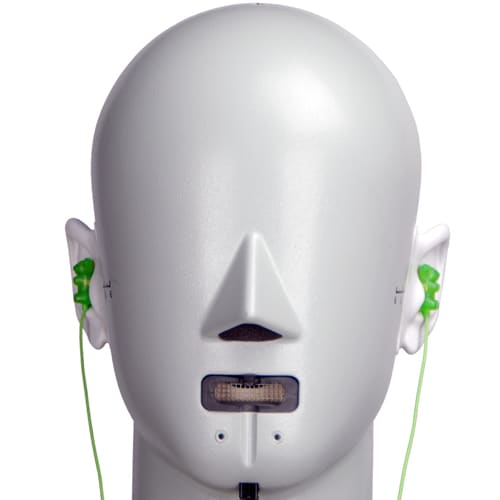
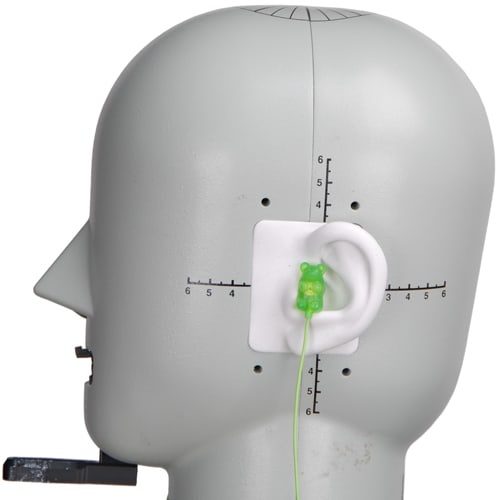
Speakers
{{section_header}}{{section.name}}{{/section_header}}
Here we see the speaker element of the {{product.name}}s, guarded by a fairly porous mesh once you remove the ear pads. Aside from the thin cloth material in front of the speaker, there really isn't a whole lot that's standing in the way of the speakers from your ears.
Back
{{section_header}}{{section.name}}{{/section_header}}
The backs of the {{product.name}}'s ear cups are wood-finished paneling with a high gloss and closed backs. Very attractive.
Band
{{section_header}}{{section.name}}{{/section_header}}
If you're a fan of leather, you're in luck: the band of the {{product.name}}s are made of a soft leather that wrap around padding and aluminum where the band meets the ear cups. Not only comfortable, but stylish.
Cable
{{section_header}}{{section.name}}{{/section_header}}
We've seen durable cables before, but this one is special. With a cloth weave around a super-thick OFC cable, the {{product.name}}s should not let you down any time soon due to a faulty line in. This monstrosity meets both ear cups, as it has a neck split.
If the cable is huge, the plug is massive. With a 1/4th inch jack, the end of the {{product.name}}'s cable is ensconced in aluminum and thick rubber to guard the already-durable cable from wear.
As previously mentioned, the cord guards to the {{product.name}} are made of thick rubber, so not many worries here.
In the Box
{{section_header}}{{section.name}}{{/section_header}}
Your {{product.name}}s will come packaged with your headphones, a cleaning cloth, assorted documentation... and that's it. Really, there isn't much in this package outside of opulence and headphones.
Durability
{{section_header}}{{section.name}}{{/section_header}}
As we discussed before, these cans are crazily durable, from the cloth weave around the cable, to the thick metal plug, to the rubber cord guards. Don't abuse your cans, but these can take it a little bit.
Aesthetics
{{section_header}}{{section.name}}{{/section_header}}
If you're a fan of the classic look, the wood paneling on the backs of these rather large cans will appeal to you. The aluminum accents are a nice touch, as well as the two curved chrome rods that guide the band of the cans at the top of the ear cups. A lot went into making these cans stunning.
Frequency Response
{{section_header}}{{section.name}}{{/section_header}}
Because these cans are designed more for listeners of music, rather than the studio mixer in mind, the frequency response is naturally going to look a little bit different than just a flat line. For example, the {{product.name}}s stay within our ideal limits for a good range of frequencies, but they do boost some of the higher frequencies to emphasize cymbal shimmer a bit, and de-emphasize sibilants in speech.

Click here for more information on our frequency response test.
Distortion
{{section_header}}{{section.name}}{{/section_header}}
There was a little bit of distortion from the {{product.name}}s, but nothing that would be noticeable to anybody listening. Audiophiles will be quick to point out that it isn't distortion-free, however, but unless you're a robot with high-sensitivity microphone ears, you will not be able to hear it.
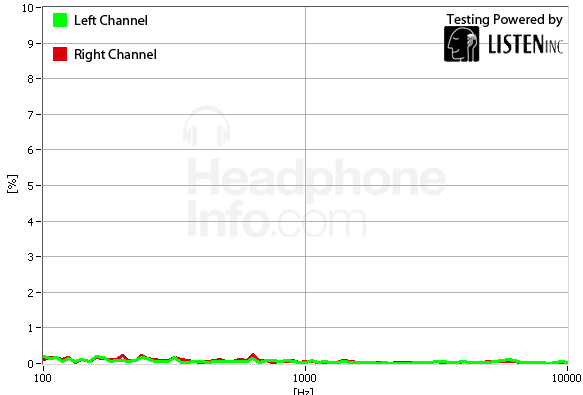
Click here for more information on our frequency response test.
Tracking
{{section_header}}{{section.name}}{{/section_header}}
This result was a little baffling, to say the least. Typically, we see high-end headphones give us a very even tracking response, but the {{product.name}}s did not. The shifts in channel preference weren't terribly egregious, but the higher the frequencies went, the more error they seemed to reveal. Changes are good that you won't be able to hear these errors right away, but if you know what you're looking for, they may be audible.
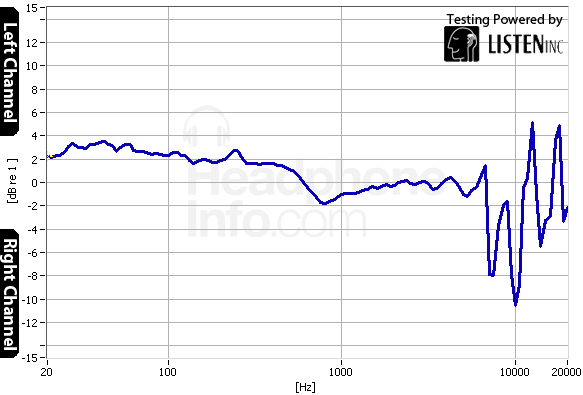
Click here for more information on our frequency response test.
Isolation
{{section_header}}{{section.name}}{{/section_header}}
Closed-back headphones typically are better than their open-backed brethren, and it shows with the {{product.name}}s. They seem to do okay at blocking out a very little bit of sound, but as far as all headphones go, they are not built for noise attenuation. This handicap makes them less than ideal for use where there is outside noise.

Click here for more information on our isolation test.
Leakage
{{section_header}}{{section.name}}{{/section_header}}
Oddly enough, the {{product.name}}s leak a fair bit of sound as well. We'd recommend that you not listen to anything too loudly (with any headphones), but with the added danger of alerting your co-workers to your bizarre music tastes.
Click here for more information on our leakage test.
Maximum Usable Volume
{{section_header}}{{section.name}}{{/section_header}}
The {{product.name}}s were able to pump out 112.57dB of sound before hitting the magical 3% distortion mark (when you start to notice the distortion badly), but as always, we caution our readers to not listen to any music this loudly, because it's not only ill-advised, but dangerous to your long-term listening health. Read up on Noise-Induced Hearing Loss to educate yourself about proper listening habits.
Click here for more on our maximum usable volume test
Short-Term Use
{{section_header}}{{section.name}}{{/section_header}}
The first thing you should notice when you plunk the {{product.name}}s on your head is just how comfortable they are. They're not quite as comfortable as the Audio Technica paddle system, but they're extremely close. They don't grip the skull that tightly, and they maintain a decent buffer between the pinna of your ear and the speaker element. Good job, Denon!

Extended Use
{{section_header}}{{section.name}}{{/section_header}}
Over a period of 6 hours, the fit doesn't really change all that much, though they can get a bit warm if you exude a lot of body heat.
Customizability
{{section_header}}{{section.name}}{{/section_header}}
These cans were not made for customizing, but why would you want to? They're beautiful the way they are, like many of our readers were assured at one point in their childhood.
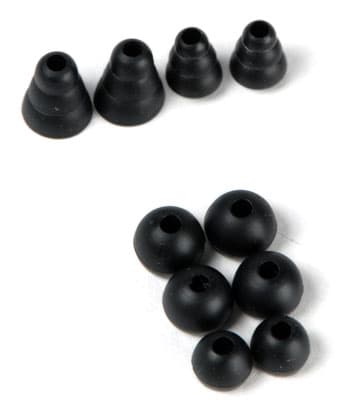
Cable Connectivity
{{section_header}}{{section.name}}{{/section_header}}
The 9.8 foot cable of the {{product.name}} ends in an insanely robust 1/4th inch plug with no adapters, in-line accessories, or extension cords.
Portability
{{section_header}}{{section.name}}{{/section_header}}
These are not portable cans, nor should you be taking them around with you. While they do have closed backs to prevent internal damage from the elements, we still recommend keeping them at home. Not only are they bulky, but they do not attenuate sound well at all.In addition, should something happen to them, you're out $1,000 USD!
Maintenance
{{section_header}}{{section.name}}{{/section_header}}
Because the ear pads are removable, you can clean them with a damp cloth if need be, but other than that, there really isn't a whole lot that you can do in the event of breakage, unless you're a good electrical engineer. Be careful with these.
Denon AH-D5000
Design
Both the Denon AH-D7000 and the AH-D5000 are virtually identical in design, right down to the ear pads, wood backing, and metal construction. Really, one of the biggest differences is that the AH-D5000s have a 1/8th to 1/4th inch threaded adapter for its plug. The other difference is that the AH-D5000 has a matte finish on the wood, where the Denon AH-D7000 has a glossy finish.
Frequency Response
Both headphones have great frequency responses, and at this level of performance, the differences are a matter of taste more than they are objective. If you like many ranges of instrument attack to remain where they should be with a flat response, pick up the AH-D7000s.
Distortion
Neither set of cans really has much of an issue with distortion.
Tracking
Both tracking responses are somewhat erratic, but nothing that is terribly noticeable.
Isolation
These cans are absolutely terrible at isolating the user from the outside world, or keeping their music to themselves.
Comfort
Both of these cans are insanely comfortable, and there isn’t really an appreciable difference between the two.
Verdict
If you’re looking for the performance of the Denon AH-D7000s but for $300+ less and a little more versatility, absolutely pick up the AH-D5000s. There’s really only very few reasons to get the AH-D7000s over them, chief among those being if you like their frequency response better. Really, these are about as similar as you can get in headphones without actually being identical, and one costs $669 instead of $999. You do the math!
Audio Technica ATH-AD900
Design
Open-backed and closed-back headphones are very different by design, but mostly because of how it allows the driver to move. Closed-back cans often do not let their speaker elements to move as well as they could by blocking or pressurizing the cavity behind the speaker, resisting the movement. Open-backed cans allow full movement in either direction, at the tradeoff of huge leakage issues and durability concerns, as their internal elements are more or less exposed to the air.
Frequency Response
For those concerned with mixing, or academically sound re-creations of recordings, the Audio Technicas are far more ideal than are the Denon AH-D7000s here, as their response is remarkably flat.
Distortion
Neither set of cans has trouble with distortion, but the Denon AH-D7000s technically have a little more.
Tracking
Neither set of headphones have a perfect tracking response, but the errors in that of the Audio Technicas are virtually inaudible, even if you know what you’re looking for.
Isolation
Neither pair of headphones are good isolators, but the Denon AH-D7000s block out more of the high end due to their backs being closed.
Comfort
Both pairs of headphones are insanely comfortable, but there’s just no beating having all the pressure and weight of your headphones dealt with by springs and wide points of contact like the ATH-AD900s do. Most of the time, it’s easy to ferget you have anything on your head.
Verdict
The thing is, despite the fact that the ATH-AD900s have better audio quality, you will annoy your partner or roommate with the amount of sound you leak from those cans, so unless you have your own room, are single, or need cans for mixing, we’d strongly suggest springing for a set of closed-backed headphones if you feel like you may annoy someone. That being said, the ATH-AD900s are about 1/5th the cost of the Denon AH-D7000s, so take that into account too.
Shure SE535
Design
In-ear monitors by their very design are very different mechanically and physically to over-ear cans, as they are designed to be held in place by applying a degree of pressure to the ear canal, while the over-ears sit outside the pinna. Because they are smaller, they are often less durable, but many in-ear monitors (IEMs) like the Shures will allow users to detach the ear buds for re-cabling should they break, which is a huge plus.
Frequency Response
The frequency response of the Shures is definitely less dynamic than that of the Denon AH-D7000s, but at a rather poor tradeoff: they underemphasize a huge range of mid to high tones, whereas the Denon AH-D7000s do not. This is a pretty slam-dunk win for the Denon AH-D7000s.
Distortion
Neither set of headphones have much distortion.
Tracking
The Shures show us how it’s supposed to be done here, showing an almost-perfect tracking response.
Isolation
Because in-ears by design block out more sound from the ear canal than do other types of headphones, it’s not a huge surprise that the Shures are far better isolators than the Denon AH-D7000s are. If you’re going into a noisy area, the Shures will be your best friends.
Comfort
In-ears are also typically very uncomfortable, ranging from mildly painful, to somewhat tolerable, or even feeling a bit like an ear infection. The Denon AH-D7000s, on the other hand, softly cradles your cranium.
Verdict
Again, because of the pros and cons of both, this one is up to you. We will go on record to say that if you are a DJ, you’re probably going to want to use earbuds like the Shure SE535s at shows rather than something that lets in a bunch of noise like the Denon AH-D7000s do. If you’re more concerned with at-home listening, the Denon AH-D7000s are probably the way to go.
Bowers & Wilkins P5-MFI
Design
In addition to having an on-ear design instead of an over-ear one, the B&W cans have an in-line remote with microphone for smartphone usage. Designed with the urban adventurer in mind rather than the homebody chained to a desk, the P5-MFIs are more suitable for sojourns outdoors.
Frequency Response
The P5-MFIs have more bass emphasis, but stay within our limits very well, whereas the Denon AH-D7000s have a flatter overall frequency response, even though it’s a little dynamic at points. Really, both headphones are at the point where neither is “better” than the other, but one is more suited for bass lovers, and the other is more suited for home audio use.
Distortion
Neither set of cans has many issues with distortion.
Tracking
Neither set of headphones has a good tracking response, as each have their semi-audible flaws.
Isolation
Strangely enough, both headphones have virtually identical noise attenuation, so neither blocks out sound better than the other (or well at all).
Comfort
Though the set of on-ear P5-MFIs are a little lighter than the Denon AH-D7000s are, the soft leather and even weight distribution of the Denons is tough to ignore. Though you’d need to try them on for yourself because all heads are not made identically, chances are good that the soft Denon AH-D7000s will cradle your head nicely.
Verdict
This one really depends on what you want. If you need a pair of cans that never leave the house, stick with the Denons. If you want something to go with you into the world, pick up the P5-MFIs for about 1/3rd the cost.
Conclusion
{{section_header}}{{section.name}}{{/section_header}}
If you're looking for a set of cans that are high on style and offer a performance and coloration that are more suited to home use than mixing, the {{product.name}} are not a bad bet for hi-fi entertainment at home. Durable and flashy, the {{product.name}}s should satisfy audiophile and audio-newbie alike, but you'll certainly pay for the luxury.
Because these cans are not geared for the studio mixer in mind, the frequency response is a little more dynamic than some would hope for, but they stay well within our ideal limits, with some emphasis on the bass frequencies. Fans of older audio equipment will appreciate the coloration the Denons offer to the sound, as it is not the standard sterile, analytical output high-end cans typically give you.
All that being said, these cans aren't for everyone. Especially for studio mixers or musicians (or anyone on a budget, for that matter). The high cost and dynamic response makes these a less than idel pick for anyone looking to equalize their output, and the low impedance makes for an interesting amping experience, to say the least. If you're looking for best bang for your buck, there are certainly cheaper models out there with comparable or better performance, but none with the same design as the {{product.name}}s
Meet the tester
A seasoned writer and professional photographer, Chris reviews cameras, headphones, smartphones, laptops, and lenses. Educated in Political Science and Linguistics, Chris can often be found building a robot army, snowboarding, or getting ink.
Checking our work.
Our team is here for one purpose: to help you buy the best stuff and love what you own. Our writers, editors, and lab technicians obsess over the products we cover to make sure you're confident and satisfied. Have a different opinion about something we recommend? Email us and we'll compare notes.
Shoot us an email


